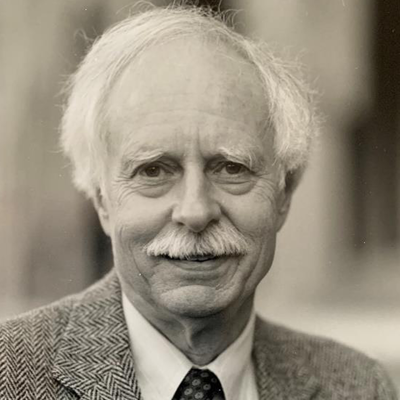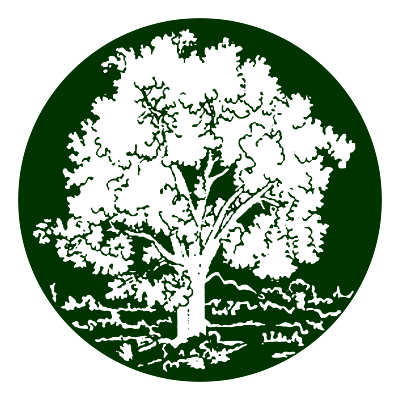Roger Newland Shepard, prominent cognitive scientist and professor emeritus at Stanford University, died peacefully in Tucson, Arizona, on Monday, May 30, 2022, after a gradual decline from Parkinson’s Disease. His wife Barbaranne of nearly 70 years, his daughter Shenna Shepard, and his granddaughter Alexandra Tansey were all at his bedside. He is also survived by two sons, Newland and Todd Shepard.
Dr. Shepard was born January 30, 1929, in Palo Alto, California. His father, Orson Cutler Shepard, was a pioneer in the field of material sciences and a professor emeritus at Stanford University. His mother, Grace Shepard, was an artist who graduated from Stanford in the early 1920s, a time when few women had the privilege of attending college.
Shepard earned his BA in Psychology at Stanford University in 1951 and his Ph.D. in Psychology at Yale University in 1955 under Carl Hovland, and subsequently completed a post-doc with George Armitrage Miller at Harvard University. He met his wife Barbaranne while studying at Yale, where she was working on her Master’s in Early Childhood Education. They were married in 1952.
At Bell Laboratories, Shepard originated the first computer-based method of what has since come to be widely known as “non-metric multidimensional scaling (NMDS),” a method for representing statistical data with a high number of dimensions in a plane or in lower dimensional space with minimal distortion so that it can be comprehended by humans. With Joseph Kruskal and Douglas Carroll, Shepard developed different yet related methods of multidimensional scaling and “cluster analysis.” These methods of data analysis continue to be applied in many fields of psychology, neuroscience, engineering, cosmology, and artificial intelligence.
Shepard was a professor of psychology at Harvard University from 1966 to 1968 and then at his alma mater, Stanford University, from 1968 until his retirement in 1996. He became the Ray Lyman Wilbur Professor of Social Science at Stanford in 1989 and held the title emeritus professor at Stanford from 1996.
Shepard is well-known for his research in the areas of visual and auditory perception, memory, mental imagery and representation, learning theory, and generalization. His ground-breaking experiments on mental rotation demonstrated that some spatial problems are solved via imagined rotations that could be measured quantitatively. He demonstrated that the time it takes for an observer to determine that two computer-generated two or three-dimensional images identical in shape increased linearly with the angular differences in their presented orientations (from 0 to 180 degrees). This work, inspired by his own hypnagogic images, was pivotal in extending the field of Cognitive Science to include mental imagery.
Shepard also developed a theory called the “Universal Law of Generalization.” He was convinced that the problem of generalization was the most fundamental issue confronting learning theory. Because we never encounter the exact same situation twice, he believed that no theory of learning could be complete without a law governing how what is learned in one situation generalizes to another. His theory postulated that the probability of a response to one stimulus being generalized to another is a function of the distance between the two stimuli in psychological space. He gave the William James Lecture Series at Harvard University to expand upon this theory in 1994.
Shepard introduced a new approach to music perception and music cognition and is known for The Shepard Tone, an auditory illusion of a tone that is perceived to continually ascend or descend in pitch, but never truly moves any higher or lower, and its correlate, the tri-tone paradox (which was further developed by Professor Diana Detusch at UC San Diego).
After he retired from Stanford, Roger Shepard moved with his wife Barbaranne to The Academy Village in Tucson, Arizona, in 2002. He set up a Roger N. Shepard Visiting Scholar Endowment that provides for a Cognitive Science Colloquium Series for prominent scientists to come to the University of Arizona and share their ideas with students and faculty in Professor Shepard’s honor.
Roger Shepard wrote several books, chapters in books, and a multitude of research papers for professional scientific journals over the course of his illustrious career. Considered one of the most influential behavioral scientists of the last one hundred years, he received many accolades, most notably The National Medal of Science in 1995 for his contributions in the field of cognitive science. He also was awarded The Rumelhart Prize in Cognitive Science, the Wilber Lucius Cross Medal of the Yale Graduate School Alumni Association, the James McKeen Cattell Fund Award, the Howard Crosby Warren Medal from the Society of Experimental Psychologists, the Award in the Behavioral Sciences from the New York Academy of Sciences, and the Distinguished Scientific Contribution Award of the American Psychological Association. He received honorary degrees from Harvard University, Rutgers University, and the University of Arizona, and was elected to the National Academy of Sciences in 1977 and the American Philosophical Society in 1999.
Shepard was also an incredibly artistic man who composed music, wrote poetry, and was an exceptional photographer. He published a book of his hand-drawn optical illusions called Mind Sights in 1990. A loving and loyal husband, father, and grandfather, he was very supportive of both his family members and the many students and colleagues that he worked with and mentored over the course of his career (including such notable scientists as Lynn Cooper, Peter Podgorney, Michal McBeath, Joyce Farrell, Carol Krumhansl, Leda Cosmides, Robert Fish, Jennifer Freyd, George Furnas, Daniel Levitin, Joshua Tenenbaum, and Geoffrey Miller).
In addition to having a keen mind and a delightful sense of humor, Shepard was a very modest man. His family will have a small private memorial service sometime in the Fall. A tribute page will be posted shortly to the Avenidas Cremation & Burial website in Tucson, Arizona, where people can read more about him, view photographs, and leave comments (www.avenidascremation.com).
In lieu of flowers, his family has set up a tribute page on The Parkinson’s Foundation website whereby you are welcome to donate in his name. The link is: http://www3.parkinson.org/goto/Roger_Shepard
Dr. Shepard was born January 30, 1929, in Palo Alto, California. His father, Orson Cutler Shepard, was a pioneer in the field of material sciences and a professor emeritus at Stanford University. His mother, Grace Shepard, was an artist who graduated from Stanford in the early 1920s, a time when few women had the privilege of attending college.
Shepard earned his BA in Psychology at Stanford University in 1951 and his Ph.D. in Psychology at Yale University in 1955 under Carl Hovland, and subsequently completed a post-doc with George Armitrage Miller at Harvard University. He met his wife Barbaranne while studying at Yale, where she was working on her Master’s in Early Childhood Education. They were married in 1952.
At Bell Laboratories, Shepard originated the first computer-based method of what has since come to be widely known as “non-metric multidimensional scaling (NMDS),” a method for representing statistical data with a high number of dimensions in a plane or in lower dimensional space with minimal distortion so that it can be comprehended by humans. With Joseph Kruskal and Douglas Carroll, Shepard developed different yet related methods of multidimensional scaling and “cluster analysis.” These methods of data analysis continue to be applied in many fields of psychology, neuroscience, engineering, cosmology, and artificial intelligence.
Shepard was a professor of psychology at Harvard University from 1966 to 1968 and then at his alma mater, Stanford University, from 1968 until his retirement in 1996. He became the Ray Lyman Wilbur Professor of Social Science at Stanford in 1989 and held the title emeritus professor at Stanford from 1996.
Shepard is well-known for his research in the areas of visual and auditory perception, memory, mental imagery and representation, learning theory, and generalization. His ground-breaking experiments on mental rotation demonstrated that some spatial problems are solved via imagined rotations that could be measured quantitatively. He demonstrated that the time it takes for an observer to determine that two computer-generated two or three-dimensional images identical in shape increased linearly with the angular differences in their presented orientations (from 0 to 180 degrees). This work, inspired by his own hypnagogic images, was pivotal in extending the field of Cognitive Science to include mental imagery.
Shepard also developed a theory called the “Universal Law of Generalization.” He was convinced that the problem of generalization was the most fundamental issue confronting learning theory. Because we never encounter the exact same situation twice, he believed that no theory of learning could be complete without a law governing how what is learned in one situation generalizes to another. His theory postulated that the probability of a response to one stimulus being generalized to another is a function of the distance between the two stimuli in psychological space. He gave the William James Lecture Series at Harvard University to expand upon this theory in 1994.
Shepard introduced a new approach to music perception and music cognition and is known for The Shepard Tone, an auditory illusion of a tone that is perceived to continually ascend or descend in pitch, but never truly moves any higher or lower, and its correlate, the tri-tone paradox (which was further developed by Professor Diana Detusch at UC San Diego).
After he retired from Stanford, Roger Shepard moved with his wife Barbaranne to The Academy Village in Tucson, Arizona, in 2002. He set up a Roger N. Shepard Visiting Scholar Endowment that provides for a Cognitive Science Colloquium Series for prominent scientists to come to the University of Arizona and share their ideas with students and faculty in Professor Shepard’s honor.
Roger Shepard wrote several books, chapters in books, and a multitude of research papers for professional scientific journals over the course of his illustrious career. Considered one of the most influential behavioral scientists of the last one hundred years, he received many accolades, most notably The National Medal of Science in 1995 for his contributions in the field of cognitive science. He also was awarded The Rumelhart Prize in Cognitive Science, the Wilber Lucius Cross Medal of the Yale Graduate School Alumni Association, the James McKeen Cattell Fund Award, the Howard Crosby Warren Medal from the Society of Experimental Psychologists, the Award in the Behavioral Sciences from the New York Academy of Sciences, and the Distinguished Scientific Contribution Award of the American Psychological Association. He received honorary degrees from Harvard University, Rutgers University, and the University of Arizona, and was elected to the National Academy of Sciences in 1977 and the American Philosophical Society in 1999.
Shepard was also an incredibly artistic man who composed music, wrote poetry, and was an exceptional photographer. He published a book of his hand-drawn optical illusions called Mind Sights in 1990. A loving and loyal husband, father, and grandfather, he was very supportive of both his family members and the many students and colleagues that he worked with and mentored over the course of his career (including such notable scientists as Lynn Cooper, Peter Podgorney, Michal McBeath, Joyce Farrell, Carol Krumhansl, Leda Cosmides, Robert Fish, Jennifer Freyd, George Furnas, Daniel Levitin, Joshua Tenenbaum, and Geoffrey Miller).
In addition to having a keen mind and a delightful sense of humor, Shepard was a very modest man. His family will have a small private memorial service sometime in the Fall. A tribute page will be posted shortly to the Avenidas Cremation & Burial website in Tucson, Arizona, where people can read more about him, view photographs, and leave comments (www.avenidascremation.com).
In lieu of flowers, his family has set up a tribute page on The Parkinson’s Foundation website whereby you are welcome to donate in his name. The link is: http://www3.parkinson.org/goto/Roger_Shepard

 Brandon Solarez
Brandon Solarez



